Related Research Articles

The viola da gamba, or informally gamba, is any one of a family of bowed, fretted, and stringed instruments with hollow wooden bodies and pegboxes where the tension on the strings can be increased or decreased to adjust the pitch of each of the strings. Although treble, tenor and bass were most commonly used, viols came in different sizes, including pardessus, treble, alto, small tenor, tenor, bass and contrabass. Separating these from other bowed string instruments such as the viola da braccio was the instruments' orientation; members of the older viol family were played with the neck oriented upwards, the rounded bottom downwards to settle on the lap or between the knees.
The City Waites is a British early music ensemble. Formed in the early 1970s, they specialise in English music of the 16th and 17th centuries from the street, tavern, theatre and countryside — the music of ordinary people. They endeavour to appeal to a wide general audience as well as to scholars. They have toured the UK, much of Europe, the Middle East, the Far East and the USA, performing everywhere from major concert halls and universities to village squares. Collaborations include the National Theatre, the Royal Shakespeare Company and Shakespeare's Globe. They can be heard on several movie and TV soundtracks; they broadcast frequently and have made more than 30 CDs.
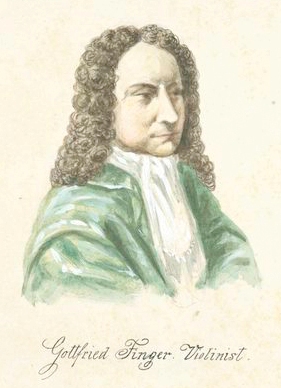
Gottfried Finger, also Godfrey Finger, was a Moravian Baroque composer. He was also a virtuoso on the viol, and many of his compositions were for the instrument. He also wrote operas. Finger was born in Olomouc, modern-day Czech Republic, and worked for the court of James II of England before becoming a freelance composer. The fact that Finger owned a copy of the musical score of the work Chelys by the Flemish composer Carolus Hacquart suggests that the two composers may have worked together in England.
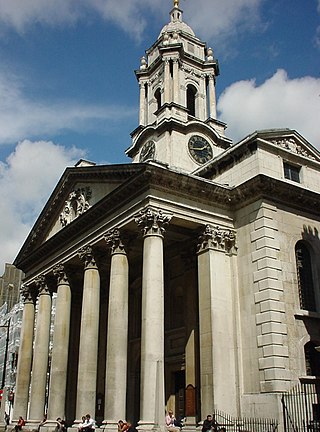
Thomas Roseingrave, like his father Daniel Roseingrave, was an English-born Irish composer and organist.
Andrew Carwood is the Director of Music at St Paul's Cathedral in London and director of his own group, The Cardinall's Musick.

Vittorio Ghielmi is an Italian musician, conductor, composer. Compared by critics to Jasha Heifetz ("Diapason") for his virtuosity, and described as "An Alchemist of sound" for the intensity and versatility of his musical interpretations, Vittorio Ghielmi attracted notice while still very young for his new approach to the viola da gamba and to the sound of early music repertoire. His multifaceted training has made him an appreciated and creative musician as well as a sought-after conductor and coach for modern orchestras or orchestras with original instruments. He is Professor for viola da gamba and Head of the Department für Alte Musik at the Mozarteum Universität Salzburg and visiting professor at the Royal College of London. He is graduate at the Università Cattolica di Milano. He was born in Milan, Italy, where as a child he began his study of music with the violin, the double bass and later the viola da gamba and composition. In 1995 he was the winner of the "Concorso Internazionale Romano Romanini per strumenti ad arco" (Brescia). His fieldwork within old musical traditions surviving in forgotten parts of the world and bringing new perspectives to the interpretation of European "early music" led to him being presented the "Erwin Bodky Award" . He studied the viol with Roberto Gini, Wieland Kuijken and Christophe Coin (Paris). Associations with instrument maker, engineer and humanist Luc Breton (CH) as well as with many musicians of non-European traditions have been fundamental to his musical career, creating a deeper reflexion on the nature of sound used in early and modern European tradition . As viola da gamba soloist or conductor, he has appeared with many of the world's most famous orchestras in the fields of both classical and ancient music. He performs since youth recitals in duos with his brother Lorenzo Ghielmi and with the lutenist Luca Pianca, in the most important halls. As soloist or chamber musician, he has shared the stage with artists such as Gustav Leonhardt (duo), Cecilia Bartoli, Andràs Schiff, Thomas Quasthoff, Mario Brunello, Viktoria Mullova, Giuliano Carmignola, Christophe Coin, Reinhard Goebel, Giovanni Antonini, Ottavio Dantone, Enrico Bronzi etc. He is one of the few viola da gamba players regularly invited to appear as a soloist-conductor with orchestra. He has been invited to play in the world première of many new compositions, many of which have been dedicated to him . From 2007 to 2011 he was assistant to Riccardo Muti at the Salzburg festival. In 2007 he conceived with the Argentinian singer Graciela Gibelli and conducted a show, based on Buxtehude's "Membra Jesu Nostri", with the American film maker Marc Reshovsky (Hollywood) and the Swedish choir "Rilke Ensemble" (G.Eriksson); the project was produced by the Semana de musica religiosa de Cuenca (Madrid) and brought later to the Musikfest Stuttgart in 2010. Over three nights in 2009, he gave a performance of Forqueray's complete works for viola da gamba at De Bijloke, Ghent (B). He has been artist in residence at Musikfest Stuttgart 2010, the Segovia festival 2011, and the Bozar Bruxelles 2011. In 2012 he conducted Handel's Water music at the Portogruaro Festival (Venice) with a spectacle on the river Lemene conceived by Monique Arnaud. In 2018 he conducted the Opera Pygmalion by Rameau at the Drottningholms Slottsteater (Stockholm), with the régie of Saburo Teshigawara.; the new conception of this spectacle was so described in the Financial Times : "In their new production for Drottningholm Slottsteater, the Japanese dancer and choreographer Saburo Teshigawaraand Italian conductor and viola da gamba player Vittorio Ghielmi create a genuine masterpiece which combines exquisite music-making with experimental dance and modern lighting effects with the theatre’s unique 18th-century stage technology. Indeed, it is some time since the theatre has been so marvellously and innovatively put to use.“
John Moran is an American musician and musicologist. He specializes in historically informed performance of music from the seventeenth through the twentieth centuries on the cello and viola da gamba. He studied cello and baroque cello at the Oberlin Conservatory, baroque cello at the Schola Cantorum Basiliensis, and musicology at King's College London. He has performed and recorded with numerous groups in Europe, including Les Musiciens du Louvre, The Consort of Musicke, English Baroque Soloists. Since 1994 he has lived in the Washington, D.C., area. He is a regular member of REBEL, a New York based baroque ensemble and the music director of Modern Musick, a Washington period-instrument ensemble. He has also appeared with Opera Lafayette, the Washington Bach Consort, the Folger Consort, the Smithsonian Chamber Orchestra and Chamber Players. He teaches viola da gamba and baroque cello at the Peabody Conservatory, where he is also co-director of the Baltimore Baroque Band. He served as President of the Viola da Gamba Society of America (2020–2024) and is currently Past President of that organization.
Jaap ter Linden is a Dutch cellist, viol player and conductor. He specialises in performance of baroque and classical music on authentic instruments.
August Wenzinger (1905–1996) was a prominent cellist, viol player, conductor, teacher, and music scholar from Basel, Switzerland. He was a pioneer of historically informed performance, both as a master of the viola da gamba and as a conductor of Baroque orchestral music and operas.
The Texas Early Music Project is a performing arts ensemble based in Austin, Texas, that focuses on bringing audiences a closer knowledge and appreciation of Baroque music, Medieval music, Renaissance music, and early Classical-period music. The group uses historical instruments in keeping with historically informed performance practice. The ensemble was founded in 1987 by Daniel Johnson, who remains the group's artistic director. The group is classified as a non-profit organization and operates primarily on grant money and donations for individual and corporate supporters. Income is supplemented by ticket sales and merchandise sales. Texas Early Music Project is a member of Early Music America. Performers are primarily professional musicians from the Austin area, although performers visit from Texas at large, from all over the United States, and occasionally internationally.
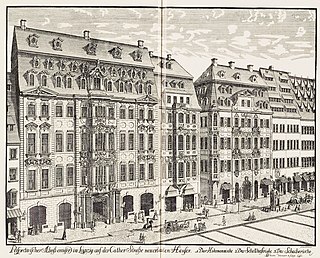
The Sonata in G major for two flutes and basso continuo, BWV 1039, is a trio sonata by Johann Sebastian Bach. It is a version, for a different instrumentation, of the Gamba Sonata, BWV 1027. The first, second and fourth movement of these sonatas also exist as a trio sonata for organ.
The Parley of Instruments takes its name from some of the earliest public concerts in the world, given in London in 1676 by the violinist John Banister. The Parley was founded in 1979—long experience in the scholarship and performance of 17th and 18th century music are brought together in their specialist areas of string and continuo performance practice. Many years of working together have produced a 'house style' that is consistent and well thought-out through a combination of experimentation with historical techniques and experience.
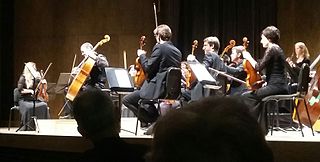
Christophe Coin is a French cellist, viola da gamba player and conductor active in the field of historically informed performance. He is the cellist of the Quatuor Mosaïques and is the director of the Ensemble Baroque de Limoges.
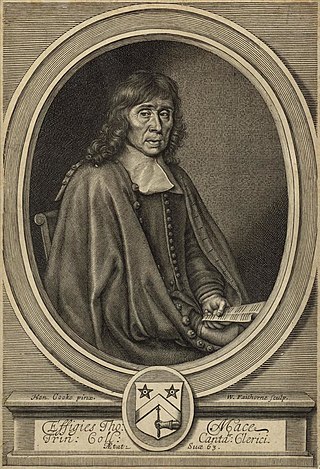
Thomas Mace was an English lutenist, viol player, singer, composer and musical theorist of the Baroque era. His book Musick's Monument (1676) provides a valuable description of 17th century musical practice.
Rogers Henry Lewis Covey-Crump is an English tenor noted for his performances in both early music and contemporary classical music. He has sometimes been identified as an haute-contre tenor. He has performed for over 50 years in choirs and ensembles such as the Hilliard Ensemble, and as a soloist. He has been especially in demand for the part of the Evangelist in Bach's St Matthew Passion and St John Passion. He also specialises in vocal tuning, and has written articles on the subject.
His Majestys Sagbutts & Cornetts (HMSC) is a British early music group founded in 1982. The ensemble presently consists of three cornetts and four sackbuts, with chamber organ or harpsichord. The group frequently collaborates with other instrumentalists and singers, and has an extensive discography on Hyperion Records and other labels.

Myrna Herzog is a Brazilian-born Israeli musician, conductor, teacher and early music researcher. She is a player of the viol, viola da gamba and baroque cello.
The Purcell Quartet, founded in 1983, was one of the world's leading Baroque quartets.
The English symphony song was a musical genre of baroque music best known in the compositions of Henry Purcell and his contemporaries including his teacher John Blow. In the symphony song voices and continuo were enriched with ritornelli for violins or a pair of recorders. Among the earliest symphony songs are four published by Oxford composer Henry Bowman in 1677. John Blow's most notable early example is "Awake, awake my lyre". The symphony song was a genre mainly linked to the Restoration royal court, just as the symphony anthem was linked to the English Chapel Royal. Purcell's symphony songs were probably written for performance by members of the Private Music in the royal apartments.

Bettina Hoffmann is a German viola da gambist and cellist, musicologist, and music pedagogue. A specialist in Renaissance, and Medieval music, she is the leader of the Renaissance and Medieval ensemble of Modo Antiquo. She has an extensive discography, primarily on the Brilliant Classics and Tactus labels and participated in two Grammy-nominated recordings.
References
- ↑ "The Parley of Instruments on Hyperion Records". Hyperion-records.co.uk. Retrieved 10 August 2020.
- ↑ "No. 61092". The London Gazette (Supplement). 31 December 2014. p. N20.
- ↑ "2015 New Year Honours List" (PDF). Gov.uk. Retrieved 10 August 2020.